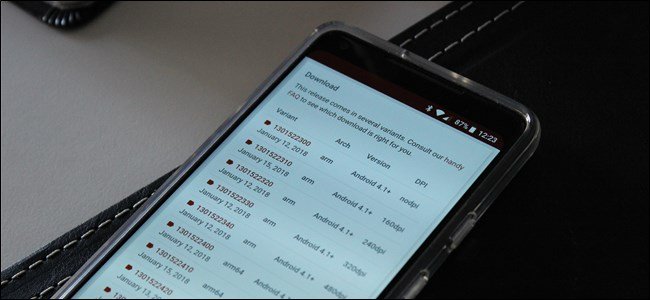
If you’ve ever tried to download an app for sideloading on your Android phone, then you know how confusing it can be. Often there are several versions of the same app designed for various device specs—so how do you know which one is the right one?
Understanding the Different File Versions
If you’re reading this, there’s a good chance you’re trying to download an app from APK Mirror, which is a legitimate hosting site for APKs that are available for free in the Play Store.
This is an excellent option if the app you want is geo-restricted, not available for your device, or has an update that hasn’t yet made it to your account. Though you may also need this information when downloading things from XDA Developers or other sources.If that’s where you find yourself, then trying to figure out the proper download for your phone can be a hassle. You won’t have to worry about this if the app you’re looking at only has one version, but some of apps have multiple versions available—for example, YouTube has 40 different variants. This is when you’ll need to know what version is best for your phone.

Generally, the details are broken down into three primary categories:
- Architecture: This is referring to the type of processor in your phone. Usually, the options will be arm, arm64, x86, and x86_64. ARM and x86 are for 32-bit processors, while arm64 and x86_64 are for 64-bit processors. We’ll explain in more detail below.
- Android Version: This is the version of the Android OS your device is running.
- Screen DPI: DPI stands for “Dots Per Inch”—basically this is the pixel density of your phone’s screen. For example, a six-inch full HD screen (1920×1080) has a DPI of ~367. Bump that resolution up to 2880×1440, and the DPI raises to ~537.
Technically, the correct terminology when referring to pixel density should be PPI, or Pixels Per Inch. But since APK Mirror (and others) refers to this as DPI, we’ll stick with the relative terminology.
ARM vs. x86
While Android version and DPI are pretty straightforward, processor architecture is another story altogether. I’ll do my best to break it down as simply as possible here.
- ARM: This is a mobile processor architecture first and foremost, and what the majority of phones run now. Qualcomm’s Snapdragon, Samsung’s Exynos, and MediaTek’s mobile chips are all examples of ARM processors. Most modern chips are 64-bit, or ARM64.
- x86: This is the architecture specification for Intel chips. As dominant as Intel is in the computer market, these chips…
The post How to Find Your Android Device’s Info for Correct APK Downloads appeared first on FeedBox.